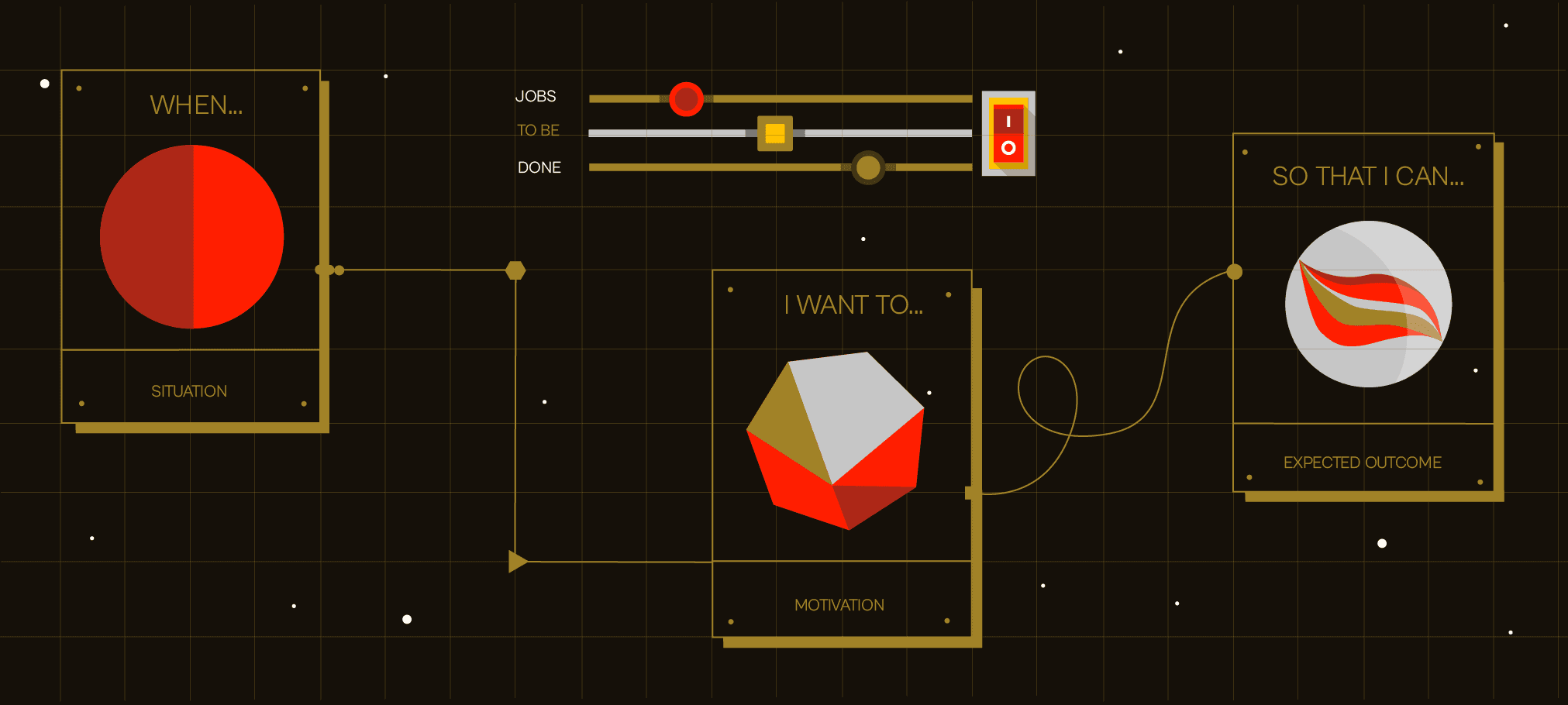Jobs-to-be-done is a framework that helps design and development teams build products based on actual user needs, focusing on the outcomes that a product achieves for them. It is extremely useful for UX designers as it helps them frame customer problems while understanding their context and motivations. It’s all about taking a systematic approach to creating digital products that customers need and are willing to buy.
At the core of the process is identifying ‘jobs’ that customers need to carry out and then analyzing how they currently handle those jobs and what they consider a successful completion. These findings help identify weak points and opportunities to improve the customer experience.
Given that UX designers are already familiar with different user research methodologies and tools like user personas, user stories, experience maps, etc. introducing JTBD shouldn’t disrupt their process. On the contrary, it can speed up decision making and add an extra layer of confidence in their design solutions.
Identifying Jobs that Users Want to Get Done
The first question that you need to answer to put the JTBD framework into practice is what jobs your users want to get done. You need to work directly with users and organize interviews to find out what their high level Jobs are and how they typically go about completing them.
It's also important to ask users about the context in which they accomplish those Jobs i.e. circumstances, motivations, emotional drivers, etc. and find out what issues and limitations they encounter using the available tools and processes. Ideally, you’ll observe users as they solve the problem with the current solution and try to understand how satisfied they are with it.
After identifying key user Jobs, you’ll also want to identify any related Jobs which customers want to accomplish together with the main jobs to be done.
Using these findings, you’ll create ‘job stories’ that will help you tailor the UX design of your product in a way that enables users to effectively fulfill those jobs. A solution can be an entirely new feature or a change in UI that makes the process smoother for the user.
Here’s the formula of a job story:
When _____, I want to _______, so that I can __________.
Gathering and prioritizing these stories will give you a clear idea of which solutions (e.g. features) to design and in what order.
Understanding Different Dimensions of JTBD
Jobs to be done are not strictly functional - the users will have emotional and social drivers for completing these jobs. You need to take these drivers into consideration if you want to truly understand the ‘why’ of JTBD.
To illustrate this, let’s take a look at one example. Let’s say you’re traveling for business and you need a hotel room to stay in for a couple of nights. If you’re looking to accomplish this ‘job’ from a functional perspective, a basic room in a hotel that’s located conveniently would do just fine. But if you want to feel relaxed in time between meetings, you’d be opting for a hotel with a good SPA program. But, if you want to impress a client, you’d choose to stay in a more luxurious hotel. This may be a simplistic example, but you get the idea.
Taking functional, emotional, and social aspects of JTBD into consideration will definitely help you improve the user experience of the digital product you’re working on by delivering value for users both on a functional and emotional level.
Conclusion
When you do the work of gathering JTBD insights through user/customer interviews, don’t let those collect dust. If you took the time to watch how users actually solve challenges now and in the context of their situation, you’ll have a goldmine of insights.
Make sure to take the next step and create an actionable plan based on your findings. You’ll be way more effective at creating solutions for users from the position of knowledge – learning their JTBD will be the ace up your sleeve for designing truly useful features and UX.
